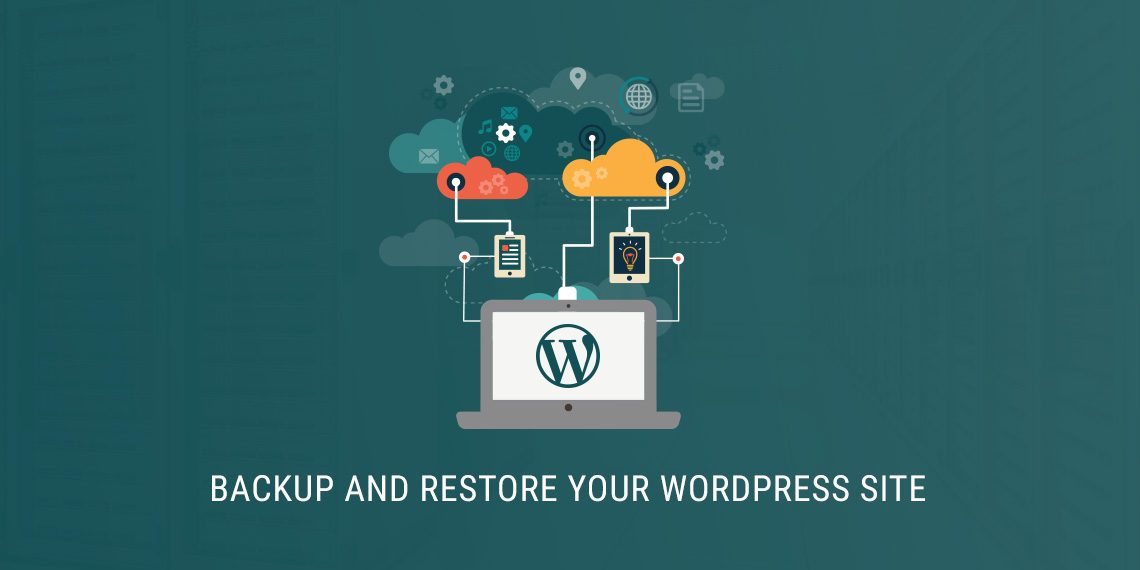
A WordPress site can involve a large investment of time and energy to build and maintain. The ultimate nightmare scenario when your business relies on a WordPress website is to find that it’s simply vanished. Unfortunately, part of dealing with the internet is coping with the unexpected, from hacker activity to a bad plug-in to malware or random human error. That’s why it’s best to know how to restore WordPress from backup files.
Here, we’ll talk about the ins and outs of maintaining an up-to-date WordPress backup, keeping up an optimized WordPress database and safeguarding your site in the event a fatal error should compromise your data.
Why is it Important to Backup Your WordPress Regularly?
Backing up your WordPress website is crucial in order to protect your valuable data and content. Without regular backups, you risk losing all of your website’s information and hard work in the event of a server crash, hacking, or other technical issues. Backups also make it easy to restore your website to a previous version if needed, such as in the case of a plugin or theme update causes conflicts or errors. Additionally, having a backup of your website can be helpful in case you need to move your website to a different hosting provider or domain. Regularly backing up your website not only provides peace of mind but also ensures that you can quickly and easily restore your website to its previous state if something unexpected happens.
Finding the Right WordPress Backup PlugIn
While it’s possible to create a manual backup of your WordPress site (we’ll cover this below), most WordPress backup plugins are a faster and easier method to secure WordPress data. It just takes a bit of research to find the right one and use it to the best advantage. Here are some general features to look for.
Ease of Use
The best backup utilities are built with the end user in mind and don’t assume you’re an IT expert. They make both backing up and restoring your WordPress files a simple task.
Robust Functionality
Some plug-ins are designed primarily to work with smaller sites and will slow to a crawl when trying to handle a larger volume of data. Make sure the plug-in you choose can actually handle your site in a timely fashion. You don’t want the backup process to take up entire workdays.
Automation
The main purpose of using a backup plug-in is convenience. A plug-in that truly delivers this is one that allows you to automatically schedule backups to run at certain times. That way, the process doesn’t rely on you specifically scheduling time on your calendar to set it in motion.
Cloud Storage
Being able to automatically upload your backups to a cloud storage service such as Dropbox or Google Drive shelters your data from any mishaps on-site. It’s becoming standard to expect cloud storage support, but double-check that the plug-in you choose supports the cloud storage service you prefer.

Migration Support
There are times you may need to migrate your site to a new domain name instead of just restoring your data. It’s best if your backup solution can also support migration and is able to quickly find and replace the applicable data in PhpMyAdmin when those times come.
Plans and Levels of Service
Finally, assess what your business can afford and make sure the backup plug-in you choose actually provides the levels of service you need at the price point you want.
There are, for example, some plug-ins that only provide a full range of cloud storage support at premium service levels. The monthly costs for per-user service can also add up over time, so you’ll want to be sure to have a detailed price estimate that gives you a full picture of what you’re getting.
Some Popular Options
A number of plug-ins have garnered solid reputations as a solution for backing up WordPress files and a method for restoring WordPress site data when needed. Among the top options are:
- BackUpBuddy, which provides quick and simple backup and restoration, migration support and useful extra features like free storage space and the ability to create “staging sites” to test out potential site changes or updates
- UpDraftPlus, which comes in a reasonably robust free version that offers automated backups and a range of cloud storage options and provides added power at the premium tier
- WPvivid, which covers all the basic features we mentioned above in a full-featured free version and offers powerful and flexible customization options at its paid services tiers
All these plug-ins come solidly recommended by both their clientele and professionals in web design.
Manual WordPress Backup and Restoration
Occasionally, after a particularly important change or update, it can be useful to do a manual backup. If a hack or other mishap leaves you locked out of your administrative area on the WordPress dashboard, it also locks you out of using a backup plug-in. In cases like this, a manual WordPress database backup can help you restore lost or corrupted data. Manual methods to restore WordPress site from a backup may be prone to human errors, but by carefully following the necessary steps, you can still achieve a successful restoration.
One method on how to restore WordPress from backup is using the open-source software PhpMyAdmin, which is carried by most WordPress hosts and uses a web-based interface to update your MySQL database. An alternative method is to download WordPress backup files more directly using cPanel.

Manual Backups and Restoration Using PhpMyAdmin
Doing a manual MySQL database backup through phpMyAdmin requires only just a few clicks carried out through the hosting control panel. It essentially consists of accessing the database section of your dashboard, selecting your database and choosing the desired export options, selecting the specific tables you want and hitting “Export.”
When restoring data, you would decide between creating a new database and importing the backup into it or emptying the existing database and replacing it with the backup data.
Manual Database Backups and Restoration Using cPanel File Manager Tool
A simpler option supported by most quality WordPress hosting providers is a single-click backup button in the Files section of the interface. Restoring the data is similarly a single-click process with this method.
The Best Way to Back Up and Restore WordPress Files
The strongest solution is to make WordPress backups part of an integrated site support and maintenance plan. It’s the kind of plan you can get from WPSitePlan, combining off-site backups, uptime monitoring in real time that allows immediate data restoration, daily database optimization, daily security scans, WordPress malware removal and a host of other features to keep your WordPress site functioning at peak efficiency. Contact our team today at (866) 956-2330 and discover how our WordPress experts at WPSitePlan can help you get the most from your WordPress site.


